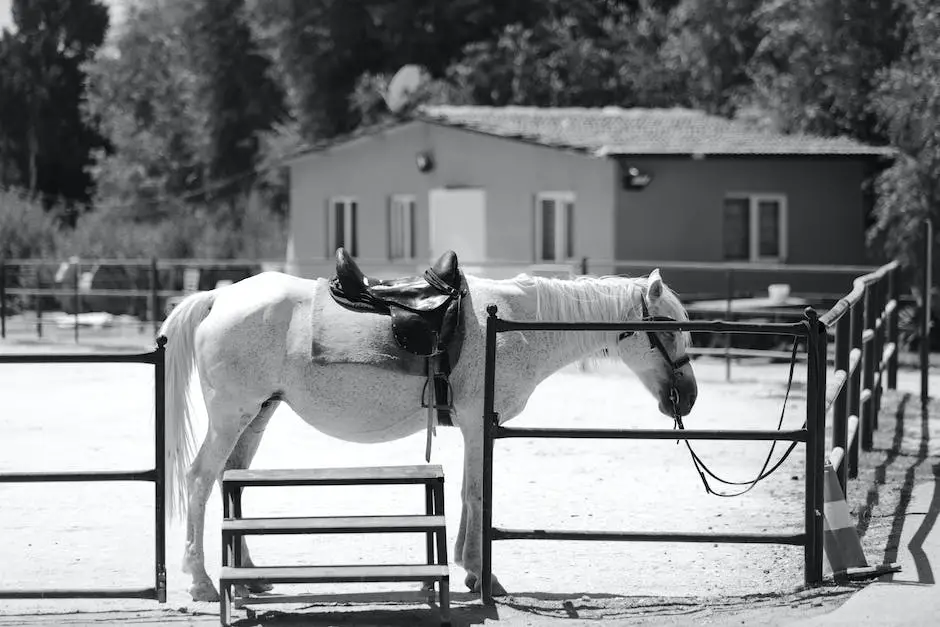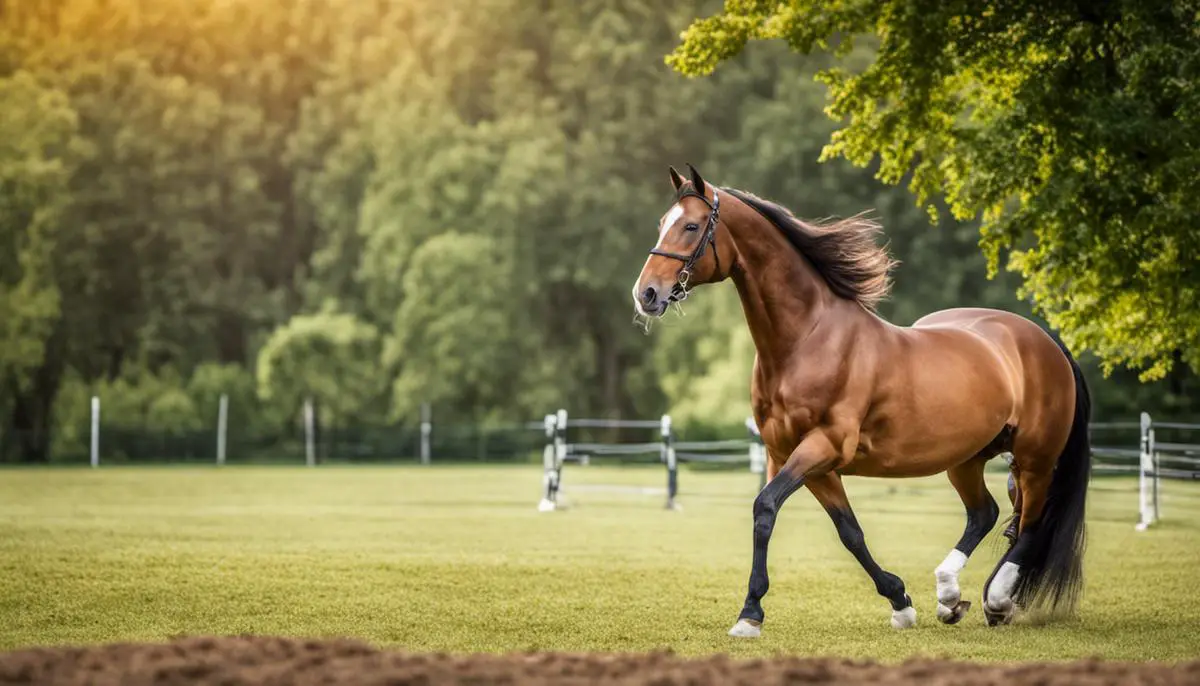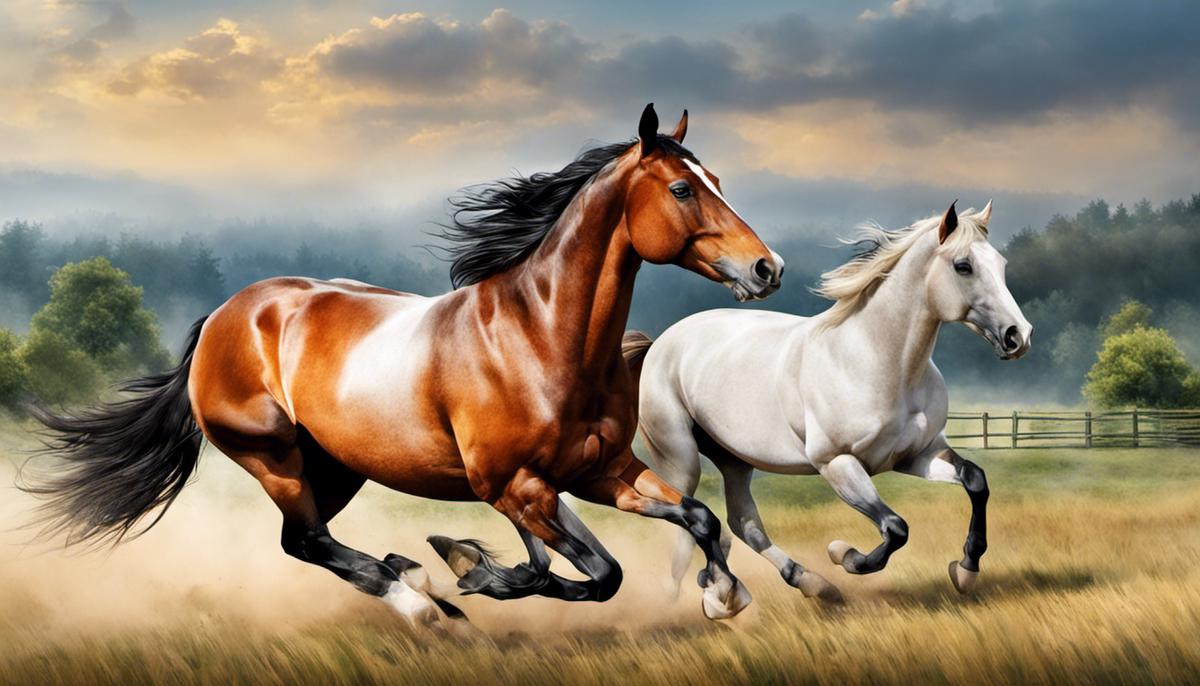The Zweibrücker, a distinguished breed of horse hailing from the lush rural landscapes of Rhineland-Palatinate, Germany, claims a history as deep and complex as its multifaceted capacities in performance sports. This article delves into the historical roots of the Zweibrücker, traceable to the 16th Century, underscoring the breed’s evolution, as shaped by the different light horse breeds that contributed to its rich genetic tapestry. We also take a critical look at the physical features that mark the Zweibrücker, offering an in-depth discussion of the color patterns, conformation, and height that define the breed. Furthermore, we will explore the temperament and intelligence that make the Zweibrücker highly regarded, highlighting the breed’s remarkable versatility, performance prowess, and eagerness to work.
Table of Contents (Horspedia)
History of the Zweibrücker Horse
Origins and Early Development
The Zweibrücker horse traces its origins back to the 16th century, specifically in the region of Rhineland-Palatinate in Germany. This area is home to the Zweibrücken stud farm, from which the breed takes its name. The royal stud farm was established in 1755 by Duke Christian IV of Zweibrücken, and it was here that the foundation of this breed was laid. Originally, this stud farm bred horses for a variety of purposes, such as heavy and elegant carriage horses, and light, swift horses for riders and soldiers.
The Influence of Other Breeds
Over the years, the breed has been influenced by a variety of light horse breeds. The Thoroughbred horse, for example, was introduced in the 18th century to add speed, stamina, and finesse to the horse’s build. Additionally, the Arabian breed was used to infuse elegance and endurance into the Zweibrücker. Later in the 19th century, the Norfolk Trotter and the Yorkshire Coach horse contributed to improving its trotting capabilities and overall performance.
The Transformation in the 20th Century
During the 20th century, the breed underwent significant transformation due to changing demand and the destruction caused by the World Wars. Before World War II, Zweibrücker horses were mainly used for agricultural work and under saddle. However, the rise in mechanization after the wars led to a decreased demand for heavy draught horses. In response to these changes, breeders began to refine the breed to create modern sport horses. The aim was to produce an all-around riding horse that excelled in dressage, jumping, and eventing.
Zweibrücker Horse Today
Today, the Zweibrücker horse is known for its dedication, courage, and versatility. The breed is registered under the Rheinisches Pferdestammbuch, the studbook of Rhineland in Germany, which acknowledges the breed’s historical connection to Rhineland-Palatinate. Furthermore, the International Federation of Sport Horse Nations recognizes the Zweibrücker as a German riding horse, further consolidating its place in equestrian sports.
A Living Legacy: The Preservation of the Zweibrücker Horse
The continued existence and prominence of the Zweibrücker horse breed owe much to the relentless efforts of its breeders and society, Pferdezuchtverband Rheinland-Pfalz-Saar, in its preservation and promotion. Their dedication to excellence can be clearly seen in the breed’s continual high rankings in the World Breeding Federation for Sport Horses. The Zweibrücker horse, thanks to passionate enthusiasts and breeders, carries on its legacy, showcasing traits of athleticism, grace, and versatility that have defined it through the centuries.

Physical Characteristics and Breed Standard
Physical Attributes: The Distinctive Zweibrücker Horse
Known for their athletic prowess and distinctive grace, Zweibrücker Horses typically stand between 15.2 and 17.2 hands high, with females generally appearing smaller than males. Renowned for their robust structure, these horses possess a straight profile, a well-defined neck, and an impressively broad chest. The strong, muscular legs and hardy feet of Zweibrückers, complemented by their short to medium backs and sloping croups, demonstrate their readiness for competitive events such as jumping, dressage, and eventing.
Their win-power is showcased through their elegant, long, and flowing tails, coupled with their rhythmic movements that serve as a testament to their strength and energy.
The Zweibrücker coat comes in an array of colors including bay, gray, chestnut, pinto, and black. Occasionally, horses with rarer colors such as palomino and buckskin can be seen, representing the breed’s rich and varied genetic heritage.
All About The Zweibrücker: Breed Standards and Ideal Qualities
The classic Zweibrücker presents as a compact, harmonious horse, exhibiting an energized but gentle manner. This horse breed symbolizes inherent nobility – evident by a neat head, vivid, responsive eyes, and a pair of attentive ears.
A quintessential Zweibrücker exhibits well-pronounced withers, a sturdy and straight back, and a rich girth, implying impressive lung capacity and endurance. The horse’s limbs should appear robust yet not excessively heavy, featuring well-curved hocks and broad, resilient hooves.
Moreover, the breed standard also appraises the horse’s gait, seeking a generous, supple stride that spans a significant amount of ground. Paramountly, the horse should illustrate inherent athleticism, a strong work ethic, and a reasonable, manageable temperament.
While some variability in physical characteristics is acceptable, a significant departure from these preset standards may categorize the horse as a non-purebred Zweibrücker. The amalgamation of physical features and temperament ultimately accentuates the Zweibrücker’s prestige as an exceptional versatile horse that is adept in various equestrian tasks.
The Zweibrücker’s appeal is not merely based on its aesthetic appeal. Its ability to meet the functional demands of various riding and driving activities in settings ranging from a structured arena to challenging countryside landscapes further underscores its well-deserved popularity.

Temperament and Performance
Understanding the Characteristics and Temperament of the Zweibrücker Horse
The Zweibrücker horse is celebrated for its remarkable temperament and intellectual abilities. The breed typically showcases a tranquil demeanor, harmonized with a cooperative disposition. Possessing an accommodating nature, these horses are perfect for riders of different proficiency levels. Additionally, their intelligence facilitates quick learning and a readiness to work, backed up by their earnest desire to satisfy their handlers, a trait that sets them apart as a coveted breed.
Furthermore, the Zweibrücker horse is well-recognized for its adaptability. It has been selectively bred to thrive in a range of equestrian disciplines. The transition between different work types seems effortless for these horses, showcasing their adaptable temperament and innate intelligence. Their ability to accommodate change is widely appreciated, often exhibiting a steadfast work ethic and optimistic attitude, even in demanding or unfamiliar circumstances.
Zweibrücker Horse and Sports Performance
The Zweibrücker horse has cemented a solid reputation in the realm of equestrian sports. Their athletic ability and prowess are witnessed within disciplines including dressage, show jumping, and eventing. These horses have been bred for performance, and as such, they often exude grace, power, and precision in each of these fields.
In dressage, the Zweibrücker horse showcases its balance and control, demonstrating exceptional skill in executing a range of intricate movements. Its intelligence and willingness to work shine through in this discipline, where understanding and memorizing complex routines play a crucial role.
Within the show jumping arena, the Zweibrücker horse is equally impressive. It brings to the table a powerful jump, agility, and a high degree of accuracy. These horses are known to maintain a steady composure even in high-pressure competitive environments, making them consistent and reliable performers.
Eventing also underscores the Zweibrücker horse’s versatility and stamina. This discipline requires a horse to excel not only in dressage and show jumping but also in cross-country—a test of speed, endurance, and jumping ability. Given their innate aptitude for adaptation, the Zweibrücker horses come up as the ideal candidates for this demanding three-part competition.
Renowned for its exemplary temperament and exceptional performance in equestrian sports, the Zweibrücker horse stands as a breed of high prestige among horse enthusiasts worldwide. Their intelligence, willingness to work, and adaptability have served them well across various equine disciplines, making them an all-round dependable breed.

Breeding and Conservation Efforts
Insights into Modern Zweibrücker Horse Breeding Practices
Renowned for its athleticism, elegance, and versatility, the Zweibrücker horse is a warm-blood breed from Germany, meticulously produced through contemporary breeding practices. Originally born out of the mid-twentieth century’s crossbreeding efforts between Thoroughbreds and indigenous German horses, the breed’s future lies in the hands of today’s responsible and thoroughly planned breeding processes. This method, based on careful selection for genetic diversity and optimal health, ensures the continuation of the Zweibrücker horse’s stellar reputation across a range of equestrian sports.
Challenges in Zweibrücker Horse Breeding
Breeding the Zweibrücker horse is not without challenges. Firstly, maintaining the purebred line of these horses, which is a mix of many different horse breeds including Thoroughbreds, Arabians, and various German warmbloods, can be a complicated process. Additionally, preserving the breed’s characteristic vigor and athleticism while maintaining a calm and cooperative temperament can be a daunting challenge. The breeding process is also expensive, requiring substantial investment in order to secure the most desirable pedigree bloodlines.
Conservation Status of the Zweibrücker Horse
As per the current information, the Zweibrücker horse does not fall under any specific categories of conservation concern. These horses are numerous, particularly in Germany and other parts of Europe, and their popularity is growing in North America. However, it is important to sustain and monitor their population to prevent any future risk of decline.
Efforts to Protect and Preserve the Zweibrücker Horse Breed
There are numerous breeding associations and societies dedicated to the preservation and promotion of the Zweibrücker horse internationally, such as the Pferdezuchtverband Rheinland-Pfalz-Saar (PS), and the Zweibrücker Internationale (ZI).
Furthermore, the International Zweibrucker and Rheinland Horse Association (IZR) founded in North America, actively promotes the breed and ensures high breeding standards. They also provide support and information for breeders, operate grading and inspections, and administer a stud book to record accurate pedigrees.
Strict Selection Process for Breeding Stock
The selection process for Zweibrücker breeding stock is stringent to ensure the purity and quality of the breed. Stallions and mares undergo rigorous inspections that assess their confirmation, temperament, health, and most importantly, their performance. Proven success in dressage, show-jumping, or eventing at an advanced level is a preferred trait in breeding stock. These high standards ensure that only the best representatives of the breed are chosen to perpetuate its line.
The Critical Role of Associations and Non-Profit Organizations for the Zweibrücker Breed
Associations and non-profit organizations bear a remarkable responsibility in safeguarding and endorsing the Zweibrücker horse breed. Key institutions, such as the IZR, conduct relentless advocacy for the breed, uphold breeding standards, and present networking channels for breeders. They structure competitions and special events to demonstrate the breed’s prowess and cultivate a supportive circle for it. Their dedicated work plays a pivotal role in elevating the breed’s recognition, rendering ample support to breeders, and securing the continuous thriving and legacy of the Zweibrücker horse.

Care and Maintenance of Zweibrücker Horses
Understanding the Care and Maintenance of Zweibrücker Horses
Originating from the Rheinland-Pfalz-Saar region of Germany, Zweibrücker horses are celebrated for their adaptability, athletic abilities, and excellent temperament. However, sustaining optimum health and performance in these superior animals requires a balanced diet regimen, habitual exercise, and strict grooming. Owing to their sports horse heritage, they are also prone to specific health issues which need careful observation and preventive measures.
Diet and Nutrition
The diet of a Zweibrücker horse should ideally be balanced and nutritious, containing the right proportions of carbohydrates, proteins, fats, vitamins, and minerals. Given their active lifestyle, they require high-energy feed like concentrates and high-quality forage to sustain their exertion levels. Like other horses, they also need a constant supply of clean, fresh water.
The quantity of feed will largely depend on the horse’s age, size, activity level, and metabolism. A diet too high or low in energy can lead to health issues like obesity or malnourishment respectively. Therefore, it is recommended to consult a veterinarian to devise the appropriate feeding schedule and meal plan.
Exercise and Training
Zweibrücker horses, typically used as dressage, jumping, and event horses, require regular exercise to maintain their fitness level, mental health, and performance. The intensity and type of exercise will depend on the horse’s training regimen and the discipline in which they compete.
Regular training not only enhances the performance but also improves coordination, increased joint flexibility and muscle tone. However, overexertion should be avoided as it may lead to injuries and stress.
Grooming for a Zweibrücker Horse
Grooming is an essential part of a Zweibrücker horse’s care and is not merely vanities. Regular brushing keeps the coat healthy, promotes blood circulation, and offers an opportunity to check for any injuries or health issues. As many Zweibrücker horses have a short, sleek coat, they can benefit from daily grooming, which helps to remove dirt, loose hair, and parasites and boosts their overall appearance and health.
Hoof care is also crucial. Hooves should be picked daily and checked for signs of disease or injury. Regular trimming and shoeing by a professional farrier will ensure hoof health and prevent lameness.
Unique Health Concerns
Given their athletic nature, Zweibrücker horses may be prone to musculoskeletal issues like arthritis, tendonitis, and laminitis. Regular veterinary check-ups can help in early detection and treatment of these conditions.
Beside, gastrointestinal problems such as colic are common among horses and Zweibrücker horses are no exception. Preventative measures, including regular dental checks, sufficient forage in the diet, and regular deworming, can help prevent colic.
In a nutshell, caring for a Zweibrücker horse involves a comprehensive regimen of balanced nutrition, regular exercise, meticulous grooming, and vet check-ups to ensure they stay healthy and perform their best.

Within the realms of breeding practices and conservation, the Zweibrücker’s status necessitates continued study and action. This article has touched upon the modern challenges and efforts tied to safeguarding this breed, pointing out rigorous selection processes for breeding stock and the role nonprofit entities play in furthering the breed’s cause. Critical to owning and caring for a Zweibrücker are knowledge and understanding of their unique needs, encompassing health issues, diet, workout plans, and grooming. Through this exploration of the magnificent Zweibrücker horse, one can appreciate the breed’s historical significance, superior physical qualities, and commendable temperament, and perceive the vitality of ongoing protection and cultivation efforts for this remarkable equine breed.
